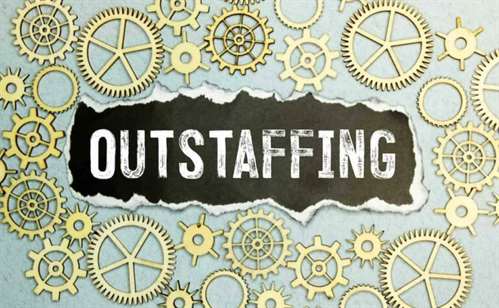What Is Cloud Hosting? And How Does It Work
Understanding pricing models for managed private cloud deployments can get complicated. Many vendor websites don't offer a straight-ahead private cloud package. Instead, they sell a spectrum of different hardware, software and services that a company can use to deploy a private cloud. Often, the pricing for these products isn't made explicitly clear on vendor websites, and buyers are prompted to speak with a salesperson once they've reached the part of the website that focuses on purchase intent. This is likely because private clouds -- and managed clouds, especially -- need to be specifically tailored to an organization's needs.
Document AI Document processing and data capture automated at scale. Run Applications at the Edge Guidance for localized and low latency apps on Google’s hardware agnostic edge solution. Day 2 Operations for GKE Tools and guidance for effective GKE management and monitoring. Migrate from https://www.globalcloudteam.com/ Mainframe Automated tools and prescriptive guidance for moving your mainframe apps to the cloud. Hi Joshua, to ensure the best speed, I would suggest to setup a CDN, which will store a copy of your content in cache and deliver the content from the server, located the closest to you.
Why Google
If your site receives a lot of traffic, you may get a dedicated server or a virtual private server, but these options do not provide you with the scalability you may need. These cloud services aren’t about providing a commodity service where hyperscale providers compete on price. Although each hybrid cloud is unique, depending on the company and/or industry, deploying a private cloud can be beneficial if yours deals with sensitive data and complex workloads. A private cloud, or private virtualization as it’s also known, is your best option if you don’t want to share your resources with other accounts or web pages.
- Free or on-demand sales options are available, allowing users to pay only for the CPU cycles, storage, or bandwidth they use.
- That said, a few companies feel safer knowing that their complete data is inside a virtual metal box which they control.
- Since your website is removed from any future issues with a physical server, this is the case.
- Continual downtime is another important aspect to consider, although there will always be instances when providers suffer slightly worse downtime than others.
- Additionally, it is less prone to hardware failure, and webmasters may scale their hosting capacity in response to traffic spikes.
Because of this, cloud hosting is also more robust and reliable than web hosting, while allowing for more flexibility to tune the parameters as needed. Since the server maintenance costs are divided between users, shared hosting is usually less expensive than cloud hosting. As such, it is an excellent option for small businesses and personal websites. With Hyperscale, servers are networked horizontally to achieve optimal scalability. Besides scalability, Hyperscale hosting also offers better speed, simple and easy management, and reduced downtime losses. It’s an excellent choice for large businesses and organizations that need stronger computing power.
Cloud hosting vs. web
With that said, it should be noted that no matter how you intend to look at it, your hosting provider will still conduct routine maintenance from time to time. We’re not talking about a server outage, but rather a loss of Internet connectivity. Recent cloud hacking cases have demonstrated that not all cloud services are as protected as they claim to be. Data backups are automatic with cloud hosting, so disaster recovery is rarely needed. The majority of cloud servers will provide you with lightning-fast speeds. You didn’t have to stress about running out of bandwidth because your website is hosted on several servers.

But cloud hosting ensures that when one of the machines goes offline, the other servers will step in and keep the website up and running. Information stored on an array of Internet-connected machines will help other machines pick up the slack and keep the site online. When it comes to cloud hosting, there are a lot of choices and each choice caters to specific types of websites needs. But no matter how big or tiny your needs, there will be the perfect type to solve your problem.
The Difference Between Cloud and Hosted Services
With traditional hosting environments, the website files are typically stored on a single server. In the cloud, the website files are distributed and spread across multiple virtual server locations. Hosted services can include anything from email to SaaS, storage, monitoring, and more.

Hostinger offers three plans ranging from $9.99/month to $29.99/month. Users must possess the required skills and knowledge to manage VPS hosting. However, it is missing data, not hacked data, which is the most concerning aspect of Cloud storage. Since it is a system of interconnected servers, if one server is unable to handle the request, another server from the pool of available servers will automatically take over the workload of the failed server. The technology refresh rate, scaling requirements, and the indirect cost of system administration personnel were all factored into this calculation.
Managed private cloud pricing
To do so, you must first determine the amount of traffic that will be generated. Unless you’re using a content delivery network , which will help reduce the site’s total downtime. If you have a significant increase in traffic, your website will be disabled if it causes service failure for other sites on your shared server. The money expended on unused facilities would be lost on a website that did not need all of the resources available on a dedicated server or did not require them all of the time. An MSP will help you every step of the way on your way to the cloud.
It’s also more secure and widespread compared to traditional web hosting. It makes it possible for applications to run on your browser without requiring downloading or installation. This makes it much easier for users as it saves them the valuable types of cloud computing solutions for business time they would spend downloading, installing, or updating apps, which now, with the help of SaaS, are available immediately on the internet. SaaS is great for applications that don’t get used often or those that need mobile and desktop access.
Microservices: The Million-Dollar Mistake Your Company is Making
To reduce their carbon footprint and achieve energy efficiency goals, a growing number of providers are turning to renewable energy sources. Sure, there’s a race going on, but it’s mostly about features and technology. In the long run, the service with the most creative features and the most comprehensive list of features wins.

Cloud hosting provides reliability and flexibility at a manageable cost. Cloud hosting also provides robust data backup and disaster recovery compared to shared or dedicated hosting on a single server. Cloud hosting is the ability to make applications and websites available on the internet using the cloud. Cloud hosting pools computing resources from a network of virtual and physical servers, allowing for greater scalability and flexibility to quickly make changes. In most cases cloud hosting is also pay-as-you-go which means the teams pay for what they use and don’t have to worry about overprovisioning or underprovisioning resources.
Why choose Red Hat for cloud services?
Cloud hosting is the acquisition of computing resources from a cloud computing supplier or cloud service provider for hosting websites, services and solutions. The data center location of a website's hosting and the plan that users are using are physical limitations of traditional web servers. Making use of a cloud infrastructure allows users to access data through a network of servers.
Read more







